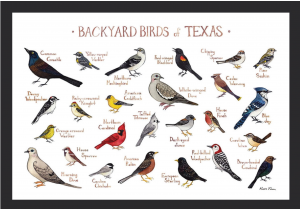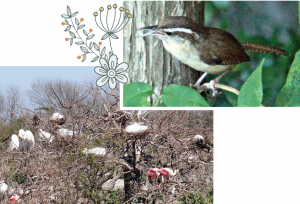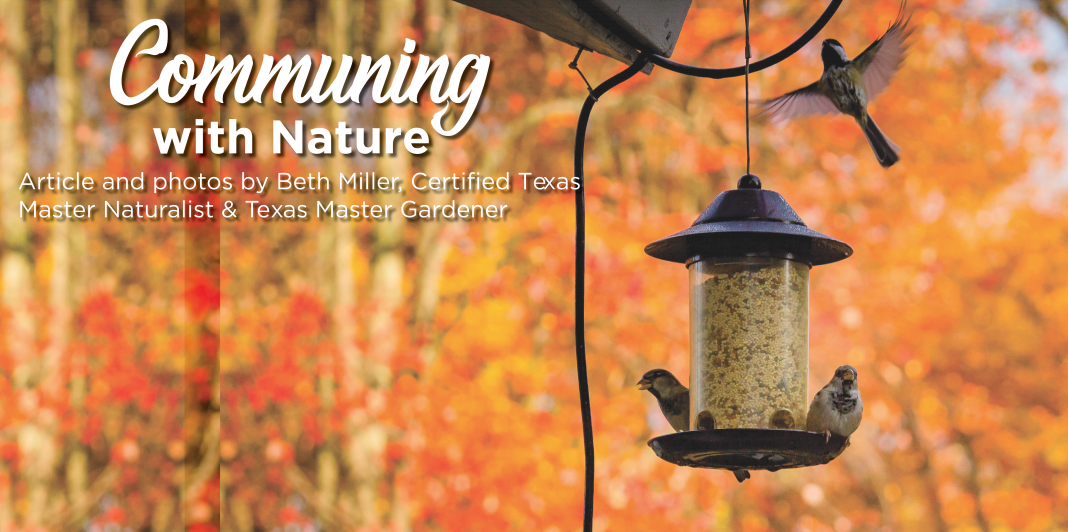When you think of a blood sport, boxing, football, and ice hockey are right at the top of the list. But a 2011 movie adapted from a bestselling nonfiction book by Mark Obmascik, The Big Year, showcased three crazy obsessed guys competing to become the “best birder in the world.” To win, they needed to identify over 700 species within a calendar year and within a defined geographic region, just all of North America, from Canada to Mexico. They were on the road nearly 24×7 for a year. Every time they heard of a rare bird sighting, off they went with their hawk eyes and bat-like hearing.
The world is full of serious birders that live for the challenge of The Big Year. If you’re just trying to identify the new bird calling from some nearby trees or at your backyard feeder, here are some tips to make your job easier.
Check the end of this article for a list of phone apps and field guides to help you figure out what you’re hearing or seeing. It helps to make some observations to narrow the search. First, try to get eyes on the mystery bird with binoculars or a spotting scope. Here are four tips to help you identify the bird.

- Is it bigger than a sparrow but smaller than a duck?
Estimating the size of the bird is the first and easiest way to start your identification. Compare the bird with the size of a species you are familiar with, blue jay, woodpecker, great blue heron. Still stumped? Try comparing it to something near the bird like a leaf, pinecone, or a large rock. It helps to measure that object for a rough idea of the size of the bird.
- Is it tall and skinny or short and fluffy?
Details of the bird’s shape can give you keywords for an app or Google search. Zoom in on the legs, beak, and tail. Is the bill long or short; curved, straight, hooked, or flat; or black or colored? Are the legs long or short, slender or sturdy? Are the wings striped or solid, short or long and curved? Each of these details gets you closer to an identity.
- Is this a bird that belongs here?
 Knowing your habitat is critical to identifying your mystery bird. If there’s no water, you likely won’t see wading birds like great blue herons or stilts. If you are on a beach, there won’t be any roadrunners. Different birds within one species often favor different habitats, making it still harder to identify. For instance, two sparrows look like they could be your bird, but one is found only in an arid habitat and the other only in forested habitats like yours. That narrows your choice.
Knowing your habitat is critical to identifying your mystery bird. If there’s no water, you likely won’t see wading birds like great blue herons or stilts. If you are on a beach, there won’t be any roadrunners. Different birds within one species often favor different habitats, making it still harder to identify. For instance, two sparrows look like they could be your bird, but one is found only in an arid habitat and the other only in forested habitats like yours. That narrows your choice.
- Body color and field marks tell the tale.
Because color often depends on a bird’s sex, breeding season, age, and location, it can be a challenging characteristic for identification. Cattle egrets are small, non-descript white birds most of the year, until breeding season when they put on long, orangey plumage to attract mates. Bald eagles don’t get their signature black body and white head until they’re around seven years old. A juvenile bald eagle with its mottled brown plumage can be easily mistaken as a golden eagle. But size, wing shape and habitat puts them in their rightful place.
With dozens of subtle differences in markings among bird species like gulls or sparrows, identifying as many size, shape, habitat, and color characteristics is critical.
Now here is the best app and field guide I know of: eBird by Cornell Lab of Ornithology mobile apps for identifying and listing bird sightings and participating in worldwide data collection. Arguably the best book for Texas is Birds of Texas Field Guide Paperback – October 27, 2020 by Stan Tekiela.
Learn more about identifying birds by joining a chapter of the Texas Master Naturalist or Texas Master Gardeners. Piney Wood Lakes Chapter of Texas Master Naturalist serves members across Polk, San Jacinto, Trinity, and Tyler Counties with volunteer opportunities, educational resources and conservation projects. txmn.org/pineywoodlakes SJC Master Gardeners serves members in San Jacinto and Polk Counties. Life-long learners and trained volunteers, master gardeners give time, knowledge, and expertise to improve the quality of life for neighbors and visitors. txmg.org/sjmg















